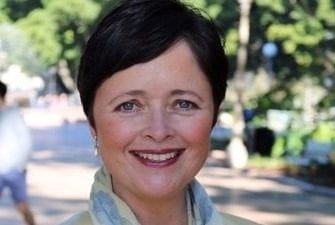And in terms of workforce participation, the stark gap between men and women working part time in NSW may suggest that the rhetoric and talk of more men working part time is not actually translating into such a shift occurring.
The report shares research and data regarding women’s economic opportunity and advancement, health and wellbeing, participation and empowerment, pulled from a number of different studies.
In terms of health, just over half of women in NSW (54 per cent) are engaged adequately in physical activity, classified as engaging in moderate intensity activity for at least 150 minutes a week over five separate occasions
That’s in addition to another finding — that 46.6 per cent of women 16 and older were classified as overweight or obese.
Inactive lifestyles are often a consequence of a lack of time for busy women who struggle to fit in exercise between work, caring and domestic responsibilities and other priorities. (VicHealth highlighted another reason in 2018: confidence, embarrassment and a fear of judgement).
The good news from the NSW report is that smoking is down amongst NSW women. Fewer teenagers are giving birth. More women are getting screened for cancer. The rate of women dying from coronary heard disease deaths is down (although Aboriginal women have an alarming, increased rate of such disease over other women).
Other concerning stats
The report shares some key figures and stats to note about the prevalence of domestic violence in NSW, as well as the mental wellbeing of girls.
Women are 5.7 times more likely than men to be hospitalised due to partner violence and the majority of domestic-homicide victims were female. Aboriginal women are 4.6 times more likely to be victims of domestic violence assault than non-Aboriginal women. The rates of violence are higher in remote or very remote areas.
In the 2016-17 period, 6849 women were hospitalised due to intentional self-harm, with one third of them between the ages of 15 and 24. The number is confronting, and while the rate has actually remained stable in recent years, it’s a trend that highlights some of the key challenges young women are up against.
And while the rate of screening for breast cancer and cervical cancer is up, there is still a large proportion of women not getting screened on a regular basis, with just over half (53.1 per cent) of women aged 50 to 74 participating in breast cancer screening during the two-year period of 2016 to 2017.
In terms of representation, just over one in four seats in the NSW Parliament were held by women in June 2018, while women held 37 per cent of senior leadership roles within the NSW Government sector, despite accounting for more than 65 per cent of employees in the field.
Workforce participation
Women’s workforce participation is on the increase in NSW and was at 59.9 per cent in May 2018, but still remains 11.2 percentage points lower than men’s. A significant 44.4 per cent of the female workforce is working part time, compared to the less than one in five men who are working part time (18 per cent). Part time work for men has hardly increased in the past ten years, rising just 2.8 percentage points (compared to a rise of 1.6 for women).
The workforce participation gender gap starts to widen around the 25-29 year age group, with the largest gap (20 percentage points) being between men and women aged 30 to 34 years.
Meanwhile, workforce segregation continues — although there have been some improvements, with the number of women employed in three of the seven traditionally male-dominated fields (mining, electricity, gas, water and waste services and construction) all slightly increasing since 2008.
Women held 77.1 per cent of jobs in health care and education and 70.4 per cent of jobs in education and training. In mining, women occupied just 12.9 per cent of roles, along with just 11.7 per cent in construction.
The report is being released today by NSW Minister for Women Tanya Davies (pictured above), and it comes following the release of the NSW Women’s Strategy 2018-2022 in August 2018.
In her foreword, Davies says that “women are leading the way” in the NSW economy, taking 60 per cent of the 372,500 jobs created in the state since April 2015. “Women are entering or re-entering the workforce in NSW in record numbers, which not only contributing to a stronger NSW economy; most importantly, it means more choices, greater opportunities and a better quality of life for all families in every community across our state.”


